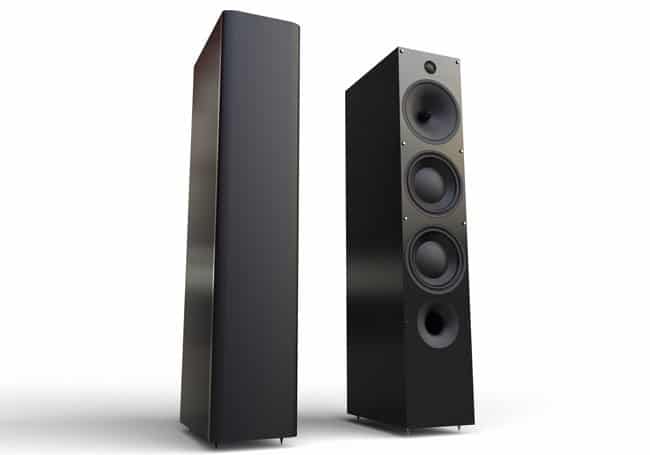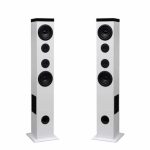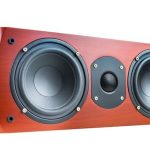The issue of room measurements keeps coming up anytime there is a discussion about speaker installation.
Why?
Because an inch can make significant difference in various sound aspects including volume, quality and harmony, especially where a sound system has speakers of varying sizes and types. Another reason why measurements are discussed frequently is that getting it right is not easy.
This article aims to stress the grandness of the relationship between the number of speakers, the listening position, and the room size. If we have too many tower speakers in our room, it will be very difficult to find that magical spot in the room where direct energy and reflections are equal.
Matching tower Speakers to Room size
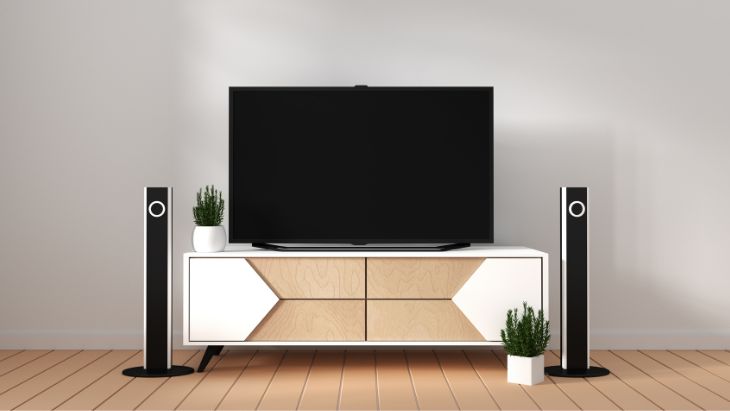
Large speakers produce lots of energy, and they also produce a lot of distortion. We have to be careful when matching speakers to room size. Speaker installation disciplines and practice have come up with rules that guide how measurements should be done when determining the right number, size and placement of floorstanding speakers in different listening spaces. A good example of these rules is that the speaker height should not exceed 50 percent of the room height. So, if you have an 8-feet ceiling, your speakers should not be taller than 4 feet when standing on the floor.
When determining the number of tower speakers to use in a room, the point is to distribute the sound energy in the room and not over-distribute the energy, which would create distortions and a whole lot of other sound issues.
Factors to consider when determining the right number of floorstanding speakers fit in a room
i. Room acoustics
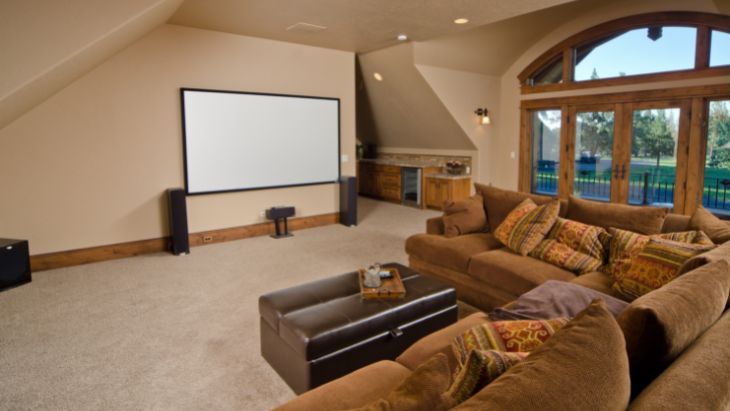
Setting up speakers at their most appropriate locations and at the best angles is quite some work. Each room has its unique acoustics, and perhaps this is where most people go wrong – assuming that a speaker set up can be copied from one room to another. According to sound experts, understanding your room’s acoustics is a critical step toward correct speaker placement.
‘Room acoustics’ is a term used to describe how sound waves behave in a closed space. Based on various room-specific factors, including the dimensions of a room, sound waves from any source interact to give an audio experience that is unique to that room. In other words, the same speaker will sound differently in different rooms. So, a room “owns” its acoustics.
What does room acoustics have to do with the number of floorstanding speakers appropriate to a certain room?
It’s universally agreed that the placement of speakers is always dependent on the listening position. Almost everyone who has some experience with home audio is aware of this fact. However, many don’t know that the listening position is fixed.
This might sound confusing, and you might be wondering: Don’t I have the freedom to choose where to place my seats in the living room?
Well, a room’s acoustics fixes the listening position to a definite location within that room. If you get it wrong when understanding the sound dynamics of a room, it is likely that you will get it wrong when finding the ultimate listening position. Consequently, you will not be able to place your speakers correctly for the best sound experience.
ii. Speaker boundary interference Effect (SBIE)
SBIE is an issue caused by placing the speaker too close to a surface boundary. It causes distortions and other audio quality issues, so you have to be very careful, especially with the sidewalls.
iii. Comb Filtering
This is the back and forth reflected activity that produces phantom sound (phantom images) between the speaker and a surface boundary.
iv. Critical Distance
Critical distance is the distance in the listening room where reflections and direct energy are equal.
Understanding these terms and factors will be helpful as you follow through with our unique guide for determining the appropriate number of floorstanding speakers for your room.
To make our guide applicable to any room, we have combined key aspects of speaker placement to provide a logical determination of the number of speakers required. Here is the step-by-step procedure:
Step 1: Divide your room into three equal spaces, lengthwise
Measure the length of the longest wall and divide that measurement by three. Using a temporary marker, draw two lines across the floor – one line starts where the first third ends and the other line marks where the second third ends.
Ideally, your speakers should sit somewhere in the first or last third of the space.
Draw another two lines at least 1 meter from each of the two longest walls (that is, leave a space of about 1 meter from each wall). This new line limits where your speakers can be placed for the best effect.
Leaving enough space between your speakers and room boundaries has a huge impact on the bass performance of the speakers. Bass waves produced by tower speakers radiate in all directions. If the speakers are closer than 1 meter to the wall, reflections cause acoustic interference that deteriorates the quality of bass and overall sound.
Hold on a bit with the demarcations. Let’s now find the best listening position.
Step 2: Find the ultimate listening position
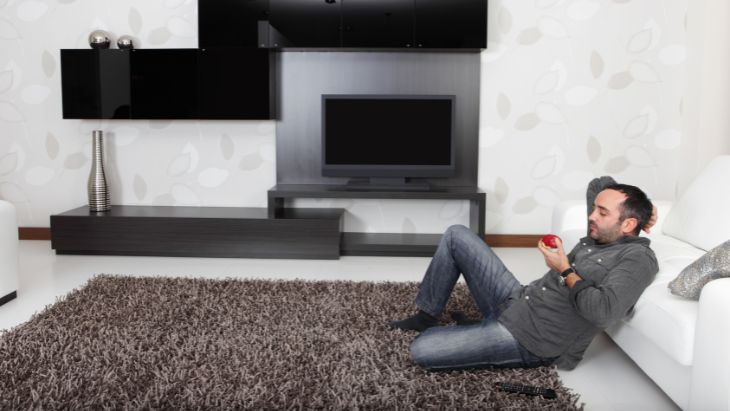
This step is critical as it enables you to assess the amount of space left after knowing the listening position. We used the 38% rule, which is essentially a guideline commonly applied by speaker installers when determining where to place floorstanding speakers.
Multiply the room’s length by 38%. Measuring from the front wall, put a mark along the longest wall where the length you have calculated reaches. From this mark, move widthwise until you are approximately at the center of the distance between the left and right sidewalls. You can start testing that point as a listening position.
How do I test the room acoustics at different listening positions?
We recommend using an acoustic analyzer to measure three important sound aspects (reverberation, speech intelligibility and background noise) in different locations around the room. The point with the best performance based on these sound aspects represents the ultimate listening position.
You realize that you are standing in the second (or center) third of the room facing the front wall. You can experiment with any location within the center third of the space except at 50% of the room’s length – the middle of the room. This position is called a nodal point. It is avoided because there is a nasty dip in the bass response here, so it is the worst listening position.
From the previous step, we determined that your tower speakers should sit in the spaces in front of and behind you (the two thirds of the room space), at least one meter from the left and right walls.
Step 3: Determining the number of floorstanding speakers to use
With the listening position already determined, and the lines marking the spaces where you can and cannot place your speakers, you can deliberate on the number of speakers that are appropriate for the space.
In other words, the remaining amount of space dictates the number of speakers to be used.
Floorstanding speakers perform best when dispersed throughout the area. A distance of at least 1.5 meters between two speakers is recommended.
From the above steps, it is clear that you can place as many speakers as your room allows provided the following conditions are met:
- The ultimate listening position has been determined first
- Each speaker must stand at least one meter from the nearest wall
- There is at least a 1.5-meter distance between the speakers
- All speakers must be equidistant from the listening position
- No speaker should be taller than 50% of the room height
Speaker placement is a hotly debated topic that often leaves many homeowners with questions about exactly how many speakers to use and where to place them. We have avoided giving a simplistic answer to these questions because every room is different.
Finding the right sound setup for your room is a process where you integrate important speaker placement aspects. The approach we have explained above will help you to assess the needs of your room in relation to the number of floorstanding speakers you need to buy. Noteworthy, you need to take your time when determining your listening position as the step is the start of correct placement of tower speakers.
Michael Evanchuk is a San Francisco-based sound engineer with 20 years’ experience installing, troubleshooting, and repairing commercial, automotive, and household sound equipment. Evanchuk owns an auto stereo center, where he offers highly competitive car audio installation and repair services. He has written dozens of articles on different sound engineering topics, all of which have been published in leading journals, blogs, and websites.

